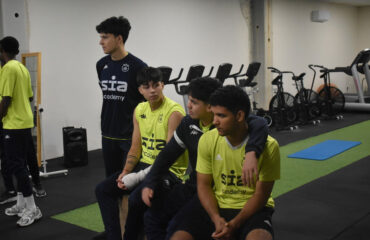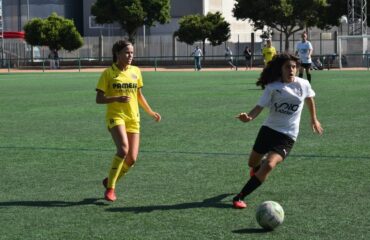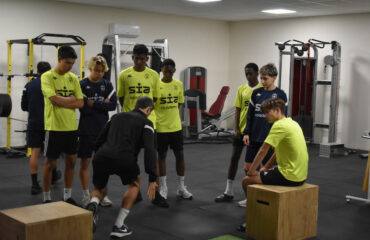In contemporary football, the wings have become a decisive space to make a difference. They are no longer just the place where wingers or full-backs play, but a tactical stage where superiorities are created that allow teams to break down compact defenses and generate goal-scoring opportunities. In this context, high-performance academies like SIA Academy work with their players to master this concept and apply it in elite competitions.
Table of contents
What it means to create superiorities on the wings
When we talk about superiority in football, we mean having more players than the opponent in a specific area. On the wings, this usually involves the coordinated participation of the full-back, winger, and sometimes a midfielder or striker drifting into that zone. The key lies in collaboration, movement, and synchronization.
In the words of Alain, coach at SIA Academy: “A single player on the wing can be easily controlled; but when we manage to involve three players in a coordinated way, we create a domino effect that opens spaces across the entire rival defense.”
This idea reflects how numerical superiority is not an end in itself, but a means to disorganize the opponent and create advantages in decisive areas.
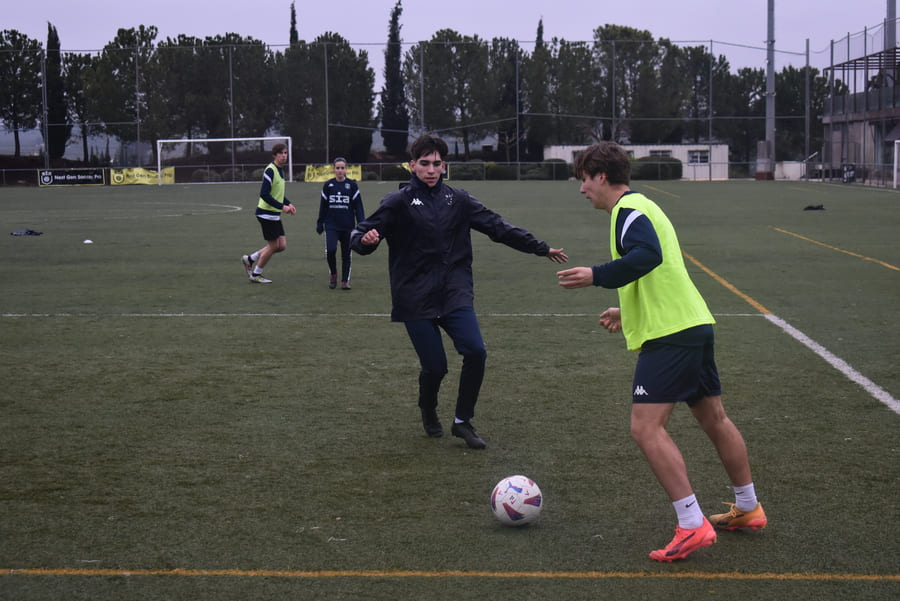
The importance of width
A basic principle to take advantage of the wings is maintaining width. If the team crowds too many players in the central channel, the element of surprise is lost. On the other hand, stretching the field forces defenders to spread out and leaves gaps between lines.
At SIA Academy, there is an emphasis that wingers should not only wait for the ball glued to the touchline, but also learn to read when to pin the full-back and when to attack the inside space. Constant variation is what confuses the rival and multiplies offensive options.
Qualitative and quantitative superiority
There are two main types of superiorities:
- Quantitative: when a team manages to have more players than the opponent on a wing.
- Qualitative: when a favorable matchup is sought, for example, a fast and skillful winger against a slower full-back.
In SIA Academy’s methodology, players are trained to recognize which type of superiority is more useful in each moment. “It’s not always about adding players to the play, sometimes it’s enough to isolate our best attacker in a one-on-one situation,” Alain explains.
How superiorities are trained at SIA Academy
Training is not limited to the physical or technical, but also focuses on the cognitive and tactical aspects. Some common exercises include:
- Directed rondos on the wing to promote quick circulation in tight spaces.
- 2vs1 and 3vs2 situations that force players to make split-second decisions.
- Conditioned games, where goals only count if the play starts from one of the wings.
Thanks to this training, players learn to automate collective movements, so that when competition arrives, they can apply them naturally.
Relation to professional football
The best teams in the world master the art of creating superiorities on the wings. Clubs like Manchester City or FC Barcelona constantly use this strategy to break down low blocks and open up the field. In modern football, where many rivals sit deep, this resource becomes almost essential.
Players trained at SIA Academy gain a competitive edge because they are developed under the same principles as elite teams. In this way, they not only develop individual skills but also a collective understanding of the game.
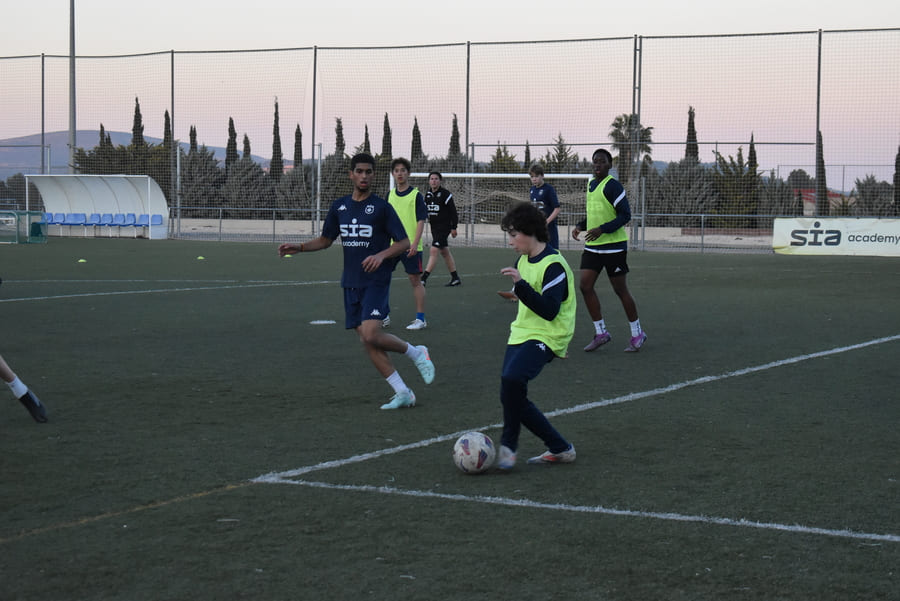
The impact on decision-making
A fundamental part of this work is game reading. Knowing when to dribble, when to play backwards, or when to switch the ball to the opposite side makes the difference. The wing should not become a dead end, but rather a gateway into the overall attack.
SIA Academy’s methodology highlights the importance of patience and intelligence. Players learn that sometimes the best option is not to advance, but to go back to attract the rival and then switch play to the other wing quickly.
The connection with defense
Although wings are often seen as an offensive weapon, it is also crucial to understand their defensive role. When losing the ball, a team must be ready to protect those open areas and avoid counterattacks. That is why at SIA Academy, both offensive and defensive phases are trained, ensuring that every full-back and winger actively participates in recovery.
The power of the wings
The wings are a vital space in modern football. Success in both attack and defense often depends on them. Creating superiorities in these zones not only increases the likelihood of generating clear chances but also strengthens team cohesion and collective understanding.
In advanced training academies like SIA Academy, this concept is worked on comprehensively, preparing players to compete at the highest level. As Alain states: “Dominating the wings is dominating the tempo of the match. That’s where we can turn a good idea into a winning play.”
This makes it clear that building superiorities on the wings is not just another resource, but an indispensable strategic pillar for football today and in the future.




